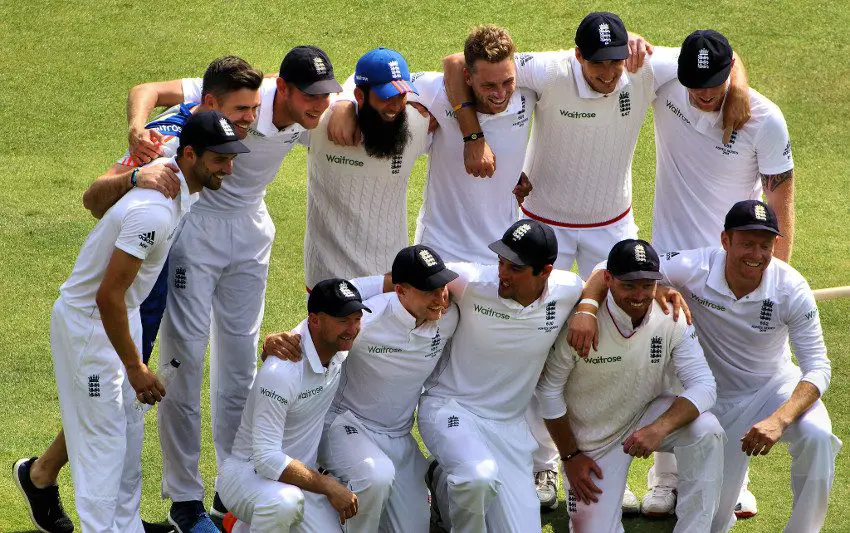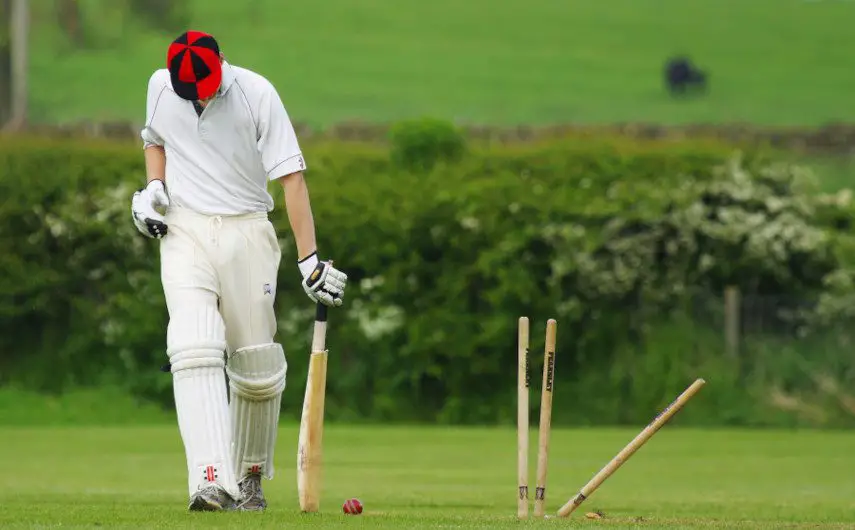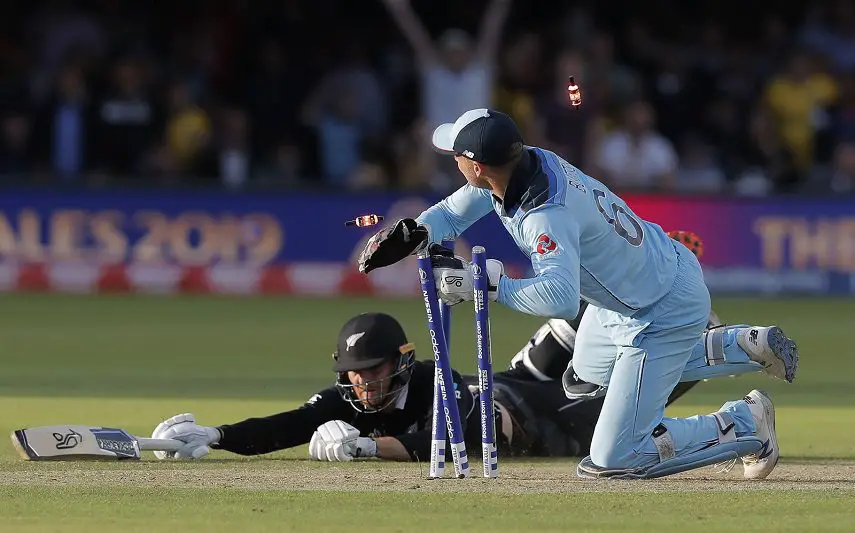Table of Contents
Test matches and first class cricket are the only forms of the game where a draw is possible, but what constitutes a draw and why do we have them?
How can Test Cricket be a Draw?

Test cricket is a timed format and there is no restriction on the amount of overs that can be bowled in a day. Usually, games will be scheduled to last for a total of five days.
Recently, some test matches have been scheduled for four days, and as I write this update, there is an upcoming test between England and Zimbabwe at Trent Bridge in 2025.
If a result is not possible by the end of the final scheduled day’s play, it’s declared that the game is drawn.
Cricket Test Match Draw Rules
In test matches, both sides will play a maximum of two innings each. The objective is to score more runs than the opposition and win the game.
If the side batting last is set a target, they will win the match if they overtake that target and they still have wickets in hand. Similarly, if that team loses all ten wickets before they reach the target, the bowling team is declared the winner.
If, however, the team batting last doesn’t overtake the opposition total before time runs out on the game, the match will be declared a draw if they have wickets in hand.
This is the most common scenario of a draw in test cricket, but it’s not essential that all four innings are played. On occasions, the rain will intervene to the extent that very little cricket is possible.
As long as wickets are in hand and the final target has yet to be reached, the game is a draw.
How Often do Test Matches Draw?
The pace of test cricket has picked up in the last twenty years, so there will be fewer draws in the modern era than there may have been in the past. If we take the 1997 season as an example, around half of the tests played in that year ended in draws.
In the 15 years from 2002 to 2017, around one in four test matches ended in a draw. The game is even faster in the modern era, and we should see that figure drop even further in the years that lie ahead.
In summary, draws are very rare in the modern era unless weather has intervened at some point.
Examples of Draws in Cricket
South Africa v England – 1929/30
Perhaps the most famous instance of a draw in test cricket is also the longest match in the history of the game. We’ve mentioned that test matches usually last for five days, but this wasn’t always the case.
Between 1877 and 1939, there were 77 timeless tests where there was no limit on the number of days of competition. One of those tests took place in March 1939 in Durban. Chasing 696 to win the game, England had reached 654/5 on the tenth day when the match was finally called off.
How can a timeless test end in a draw? The game had been going on for so long that the tourists had to catch the boat that was scheduled to return to England. Had they stayed and won the game, they would have likely set a world record chase that may never have been beaten.
India v West Indies – 2011
There have been two games in the history of test cricket where the match has been drawn with the scores level. The second of these took place at the Wankhede Stadium in Mumbai on the West Indies’ tour of India in 2011/12.
Chasing 243 on the fourth innings to win the game, India finished on 242/9. As the ninth wicket pair went for the winning runs on the final ball of the game, India’s R Ashwin was run out to ensure that the match finished in a draw by the tightest of margins.
2005 Ashes – England v Australia
There were two draws in the five-match Ashes series between England and Australia in 2005. Both were dramatic games and would have a huge bearing on the final outcome.
In the third test at Old Trafford, the last wicket pair of Brett Lee and Glenn McGrath held on for a few overs so that Australia remained in the series.
The second draw came at the Oval, and it confirmed that England had won back the Ashes. Rain had played a part, but some brilliant batting by Kevin Pietersen in particular had its say.

What’s The Difference Between a Draw and a Tie?
A tie is possible in any form of the game, and it is distinct from a draw. In test matches and first class cricket, a tie occurs when scores are level and the side batting last has lost all ten of their wickets.
In the history of test cricket, there have only been two tied games up until 2024. The first of these took place in Brisbane in 1960, and the game involved hosts Australia and the West Indies.
The second tied test followed in 1986. Once again, Australia were involved as they tied their test with India in Chennai. Tied games are more common in domestic first class cricket, but they remain rare in comparison with drawn matches.
Test Match Draws in the Mid-2020s
When the West Indies and South Africa drew the first test match of their series in August 2024, it broke a world record. This was the first drawn game in 28 tests around the world, and that was the longest streak of wins and losses in the history of cricket.
Rain in Guyana played its part, and the run proves that draws are slipping out of the game. With test cricket being played at such a faster pace in the modern day, we might be updating that record once again before too long.
Why Can’t Limited Overs Matches be Drawn?

The objective in limited overs cricket is to score more runs than the opposition. If the side batting second finishes their innings with wickets intact, they will lose the match if they haven’t overtaken their opponent’s total. There is no value in batting out time as a draw isn’t possible in ODIs’ T20s or List A cricket. This is a good thing as it avoids any negative cricket.
It is, of course, possible that the scores will finish level at the end of the allotted amount of overs. At this point, different things will happen depending on the tournament. In some cases, the match will simply be declared a tie, as distinct from a draw. If the match forms part of a league format, the two sides will share the points.
In other tournaments such as the Indian Premier League and the Big Bash League, the teams will now enter a Super Over. Each side receives six legitimate balls to score as many runs as they can while keeping two wickets in hand. The team with the highest total after the single Super Over wins the match.
In the past, teams that had lost fewer wickets would win the match, and there would be no need for a Super Over, but this law seems to have gone out of the game.
Conclusion
Some will say that a draw is a boring aspect of the game and should be done away with. As we’ve seen with our examples, that doesn’t have to be the case, and I think they are important.
Draws can be exciting, but they should also be looked at as a legitimate result. In the context of a series, it’s important for a team not to lose so that they can regroup and try to win the next match.
They may be frustrating, but a draw really is a necessary part of the game.


